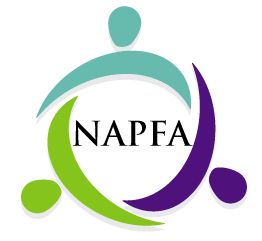How to Pay for Junior’s College (Part 3): Grants, Scholarships, etc.
I’ve saved the best for last. After all, what could be better than having your child’s college education be free?! Grants and scholarships differ than loans, in that they don’t have to be paid back. Some are awarded on financial need, some on academic merit, and others on associations with different organizations. Just because your child may not be eligible based on their financial need or their less-than-stellar high school academic career, it may still be possible for them to get some of this “free money”.

Grants:
A Federal Pell Grant is generally awarded to financially needy undergraduate students for an amount up to $5,645 per year (2013-14). Not every school participates in this program, so you’ll have to check with the financial aid office of your school of choice. Pell Grants are funded by the U.S. Department of Education, and paid to the school. The school then grants it to eligible students. The amount of aid which the student is eligible for is not affected by other aid received. To apply, a Free Application for Federal Student Aid (FAFSA) must be filled out.
The Federal Supplemental Educational Opportunity Grant (FSEOG) is also a need-based grant available to undergraduate students for up to $4,000 per year. Like the Pell Grant, not all schools participate. Unlike the Pell Grant, the U.S. Department of Education gives each participating school a certain amount of funds. Once the school’s FSEOG funds have been awarded to the students, no more awards can be made for that year. For this reason it’s very important to apply for this grant as early as possible to ensure your child doesn’t miss out! To apply, a Free Application for Federal Student Aid (FAFSA) must be filled out.
For all those aspiring teachers out there, the Teacher Education Assistance for College and Higher Education (TEACH) Grant is available. It’s different than the previous grants because there are class requirements and after-education job requirements that must be met in order to prevent this grant from turning into a direct unsubsidized loan, which charges interest. If your child is interested in teaching in an elementary or secondary school which serves low-income families, this grant of up to $3,716 is something to consider. (The recent Sequester has resulted in reduced award amounts.)
Another federal grant, which I hope very few of your children would be eligible for, is the Iraq and Afghanistan Service Grant. It is available to those students who have a parent or guardian that died as a result of military service in Iraq or Afghanistan. If your child isn’t eligible for the Pell Grant based on his expected family contribution amount, but meet the remaining Pell Grant eligibility requirements, he may be eligible for this grant. The amount of the grant normally is the same as the Pell Grant, but due to The Sequester the amount is reduced by 10% (i.e. only $5,080.50 instead of $5,645.00).
Scholarships:
Scholarships are gifts that don’t need to be repaid. They’re awarded based on merit, academic achievement, a special talent or trait, a certain association, financial need, or some combination of these bases. The amount of the gift can be a small one-time award all the way up to full paid tuition. A good source to begin your search for available scholarships is the financial aid office of your child’s school. You can also look online; however, you should be cautious of scams. You should never be asked to pay to find available scholarships. The Washington Student Achievement Council is a good source of information for Washington residents.
Etc:
The Federal Work-Study Program is a program that’s available to all students with financial need, assuming their school participates. It provides students part-time employment while they’re enrolled in school and is administered by the school. The students are guaranteed the minimum wage, but may earn more depending on the type of work you do and the skills required for the job. Check with the financial aid office of the school your child is interested in attending for more information.
This series on How to Pay for Junior’s College is a drop in the bucket of all the information available on the subject. Below are links to some website that I find particularly helpful, which I’m sure you will, too!
Washington Student Achievement Council
Federal Student Aid, by the U.S. Department of Education





